If you’ve ever wondered about Animals with Long Necks and anticipated to know why they have long necks? then cheer, this article is for you.
In this Article, We shall look at amazing Animals with Long Necks that live across the world with pictures.
Table of Contents
Giraffe
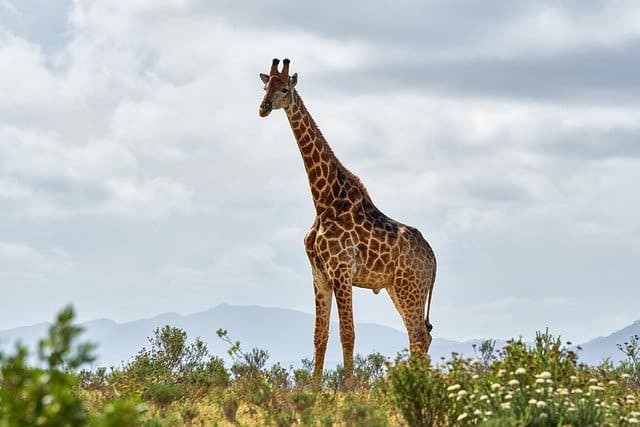
The giraffe is the tallest living mammal found on land that belongs to the family Giraffids inhabited grasslands and open woodlands and is found in East Africa, Southern Africa, and zoos of many countries as well.
Giraffes have an elongated neck that can reach as much as 6-8 feet long such that it will look awkward when it tries to drink water as its very long legs have to be spread away or kneel down to reach the water. Its long neck enables them to eat leaves of the trees, which can’t be accessed by other animals.
Necking: To show dominance, to impress the female giraffe, the male giraffe will fight each other through their long neck.
Gerenuk
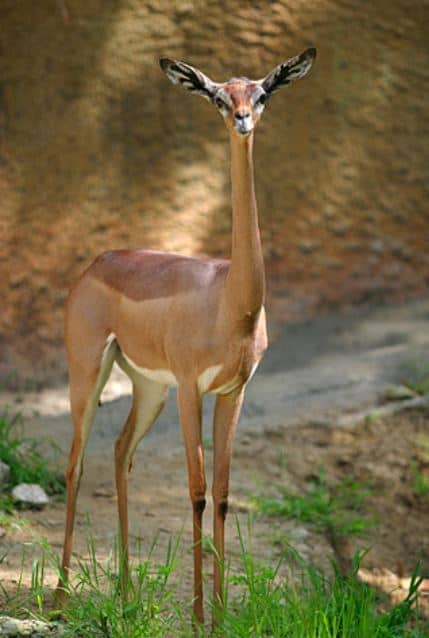
The gerenuk, also known as the giraffe gazelle, Waller’s gazelle, is a long-necked herbivorous antelope in the family found in East Africa.
It is a browsing antelope identified by the long, slender neck and limbs, that enable them to graze on tall bushes and tree leaves and its derivatives by standing on their hind limbs. These are about 2-3.5 feet tall, with a relatively long neck that is 7-10 inches in diameter.
Even though they’re only about 3 feet, They can reach branches located at about 6 feet above the ground by standing on their back limbs.
Camel
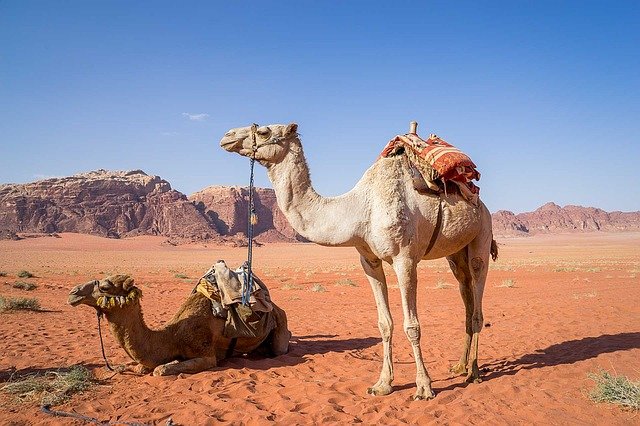
A camel is a herbivorous mammal that belongs to the family Camelids and genus Camelus and is famous for humps, these are found in Mongolia, North Africa, Australia, and the Gobi Desert in China.
Camels have noticeably a long neck because of its neck bones called cervical vertebrae are larger, longer in size. There are about 7 cervical vertebrae joined together to form its long neck. As camels are grazers of the ground vegetation, they need a long neck to reach these ground vegetation.
A camel can have a neck about 4 feet long while its height is about 6-8 feet tall.
Ostrich
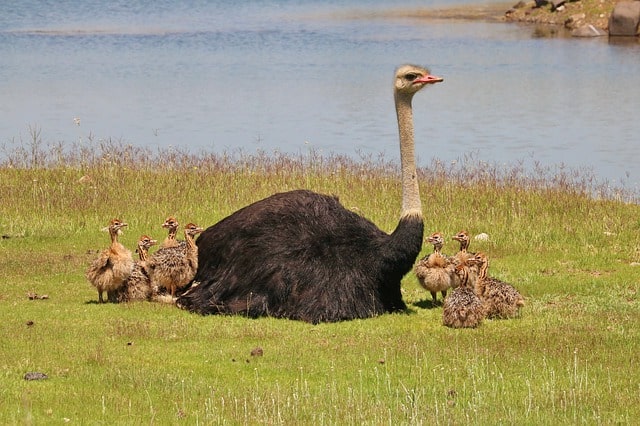
Ostrich including the common ostrich, the Somali ostrich, is a famous flightless bird that belongs to the family Struthionidae inhabited savannas, grassland, open woodland, and the Sahel found in Africa.
Among birds, Ostriches have relatively long necks with a reddish-bluish color in them. These elongated slender necks enable them to grab foods that are located away from them. Fortunately, Its long necks enable them to see the predators that are away and hiding in the grasses before they could encounter them and their nests.
When an ostrich can’t face its potential predators, It will lie down by folding its long legs and straightening its neck parallel to the ground.
Emu
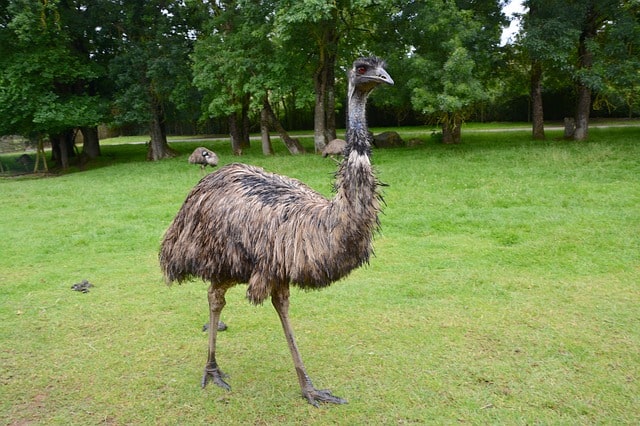
The emu is the second-largest bird and also a flightless bird in the world that exists today, after the ostrich. It belongs to the Casuariidae family and is found in Australia and the zoos of many countries.
These giant flightless birds reach a height up to 5-6 feet, have a long neck with pale blue, sparse feathers on it. Its long neck primarily helps them to see approaching and hidden predators and threats in the tall grasses spread across the Australian grasslands.
Interestingly, They have an inflatable neck sac located inside of their necks that can produce a loud booming noise and other vocalizations.
Greater Rhea
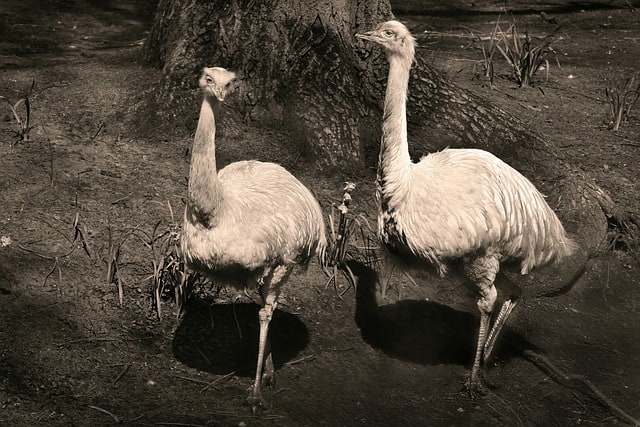
The greater rhea, also known as American rhea, grey rhea, common rhea, is a flightless bird in the family Rheidae, and is found in South America, Argentina, Uruguay, Brazil, Paraguay, and Bolivia.
These are the large birds that resemble emu and can reach height up to 5 feet, have long necks with feathers on them.
Liama

Llamas including guanaco, Suri alpaca, Huacaya alpaca, and Lama glama, are social herbivorous animals known to live with others in a herd and are found in Australia, Europe, North America, and also in other parts of the world as well.
These animals have necks that are comparable to the neck of camels, Its long neck is positioned in such a way that it can easily draw to the ground while grazing on ground vegetation and elevated at an optimal height to see while it is walking.
Additionally, They use their long necks for body balance while climbing, especially on rocky surfaces.
Black Swan
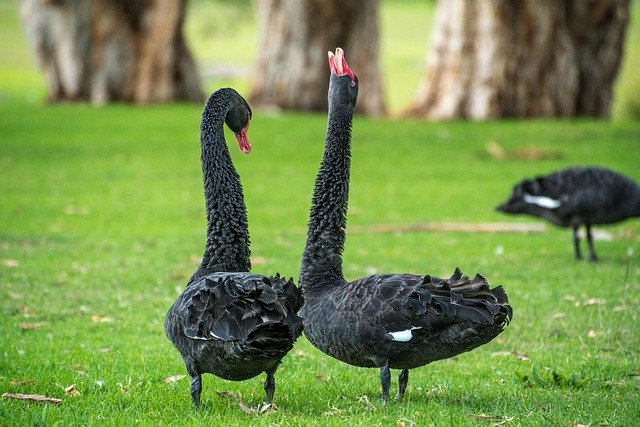
A black swan is a large waterbird belonging to the family Anatidae that inhabited freshwater lakes, brackish water lakes, saltwater lakes, swamps, and rivers, and is found in Australia and New Zealand.
They have a long neck which is the longest of any swans and usually curved in an “S”-shape with black in color. This long neck enables them to reach the aquatic submerged vegetation such as stoneworts, pondweeds, and aquatic vegetables.
When they felt threatened, erect their necks and open their wings to show their aggression to the intruders.
Flamingo
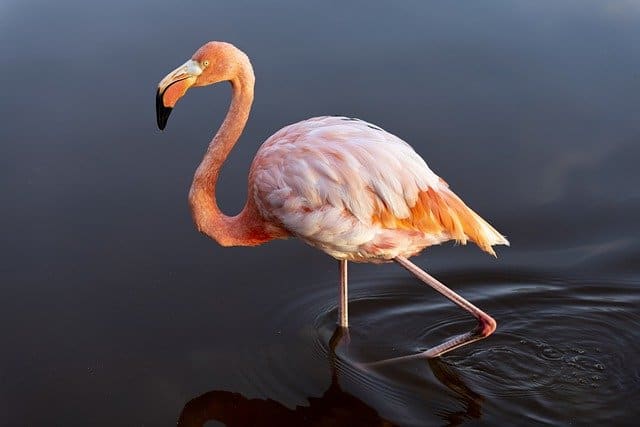
Flamingos including Andean flamingo, American flamingo is a wading bird belongs to the family Phoenicopteridae that inhabited mangrove swamps, tidal flats, and estuarine lagoons and is found in Peru, Chile, Bolivia, Belize, and the Galapagos Islands.
Flamingos have a long neck due to the presence of 19 elongated neck bones called cervical vertebrae. These long necks enable maximum flexibility, movement, reaching distant prey, and twisting. Long necks are the adaptation as they have long legs that can prevent wetting while standing on the shallows and useful as they can strike the prey with precision before the prey can notice.
Its neck is designed in a way such that it can turn the head upside down to feed and filter the aquatic foods.
Great Egret

A great egret, also known as the common egret, large egret, great white egret, the great white heron is a species of heron that belongs to the heron family Ardeidae.
This beautiful great egret has the longest neck among the other egret species. Like most birds, these also possess a long S-shaped neck with white colored uniformly distributed feathers that can be stretched while striking their prey through their sharp beaks.
These flying birds can reach about 3 feet in height and spread 5 feet of wingspan.
Snake-necked turtles
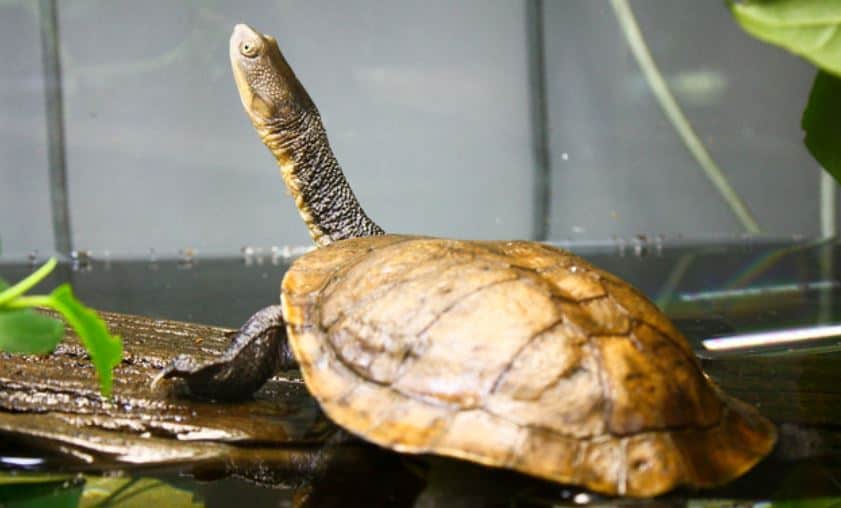
The snake-necked turtle is a species of a turtle with a carnivorous diet, primarily prey on fish. These belong to the family Chelidae and are found in Australia and New Guinea.
These snake-necked turtles and their family members have the longest neck in the species of turtles in the world. Its long necks resemble the snake when raised above water or vegetation while hiding its body. The long neck is folded towards its body that is stretched in a fraction of seconds against the approaching preys.
Interestingly, They have very long necks such that they are relatively longer than their shell- that’s about 25cm long.
Dreadnoughtus
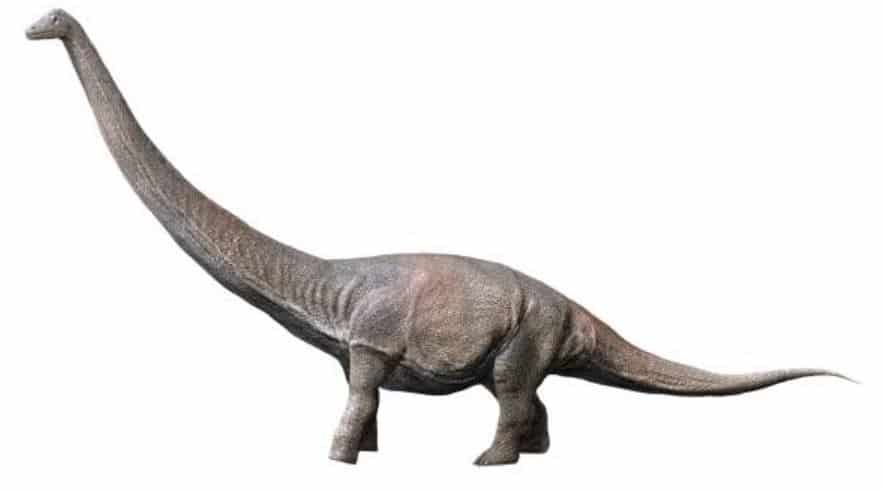
Dreadnoughtus schrani is one of the largest land vertebrates that lived 77 million years ago and is expected to have an herbivorous diet and live in southern Patagonia, Argentina.
They have a massive body weighing more than 65 tons and very long necks about 37 feet, that’s huge. Its neck is expected to be more horizontal in position as its front legs are relatively longer than its hind legs with a body size of about 85 feet.
Dreadnoughtus is thought to have an unusually long neck that is more than its own body size.
Brachiosaurus
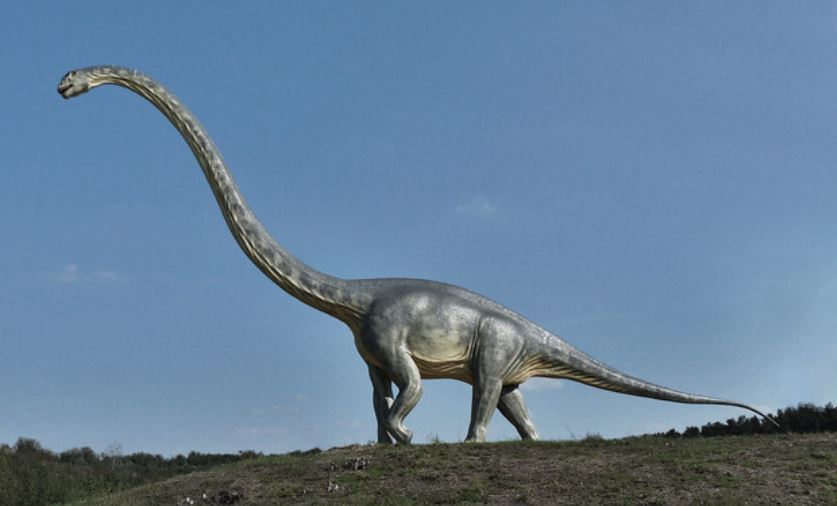
Brachiosaurus is a massive herbivorous dinosaur that lived 15o million years ago in the regions of North America, Africa, and Europe.
This Brachiosaurus is one of the largest dinosaurs among many types of larges-sized dinosaurs as they weigh about 40-80 tons with head to tail length of about 25 m and height of about 10 m. Compared to other shorter necks dinosaurs, these have longer necks about 30 feet in length.
Its neck was slightly bent at two sides resembling a slightly ‘S’ in shape.
Diplodocus

Diplodocus is a herbivorous dinosaur that walked on four legs and lived around 150 million years ago in North America.
These Diplodocus have a long neck about 26 feet and long tails about 45 feet making animals with the longest body. However, its head is relatively smaller in size, about 2 feet. Thus it has over 80 feet of body measured between head to tail, and has a whip-like tail with more than 80 vertebrae in them.
They balanced their body which is about 15 tons through a long neck and tail, where its tail is used as a weapon against predators.
King vulture
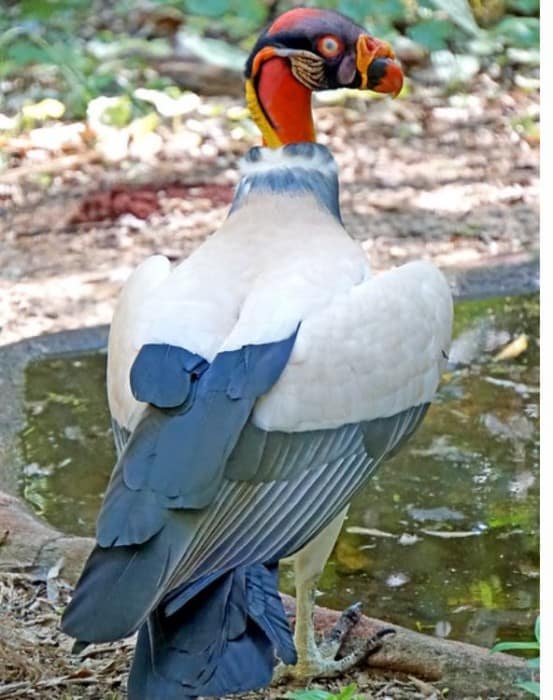
A king vulture is a large bird that feeds on carrion belonging to the New World vulture family called Cathartidae inhabited tropical lowland forests and is found in Central and South America and southern Mexico to northern Argentina.
They have long necks as it enables them to go through the dead bodies to eat carrion, and fetch meat. Its neck has no feathers or simply they have bare necks to avoid the blood, bacteria attach to their feathers while they are eating on carrion that usually contains microbes.
During temperature drop, cold regions or environments, they will bring its long neck towards their body to conserve heat energy and during summer they will stretch their long neck to dissipate heat through it.
Anhinga
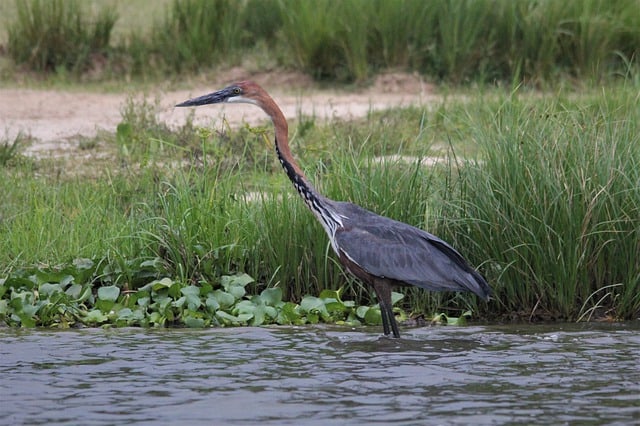
The anhinga, also known as snakebird, darter, American darter, water turkey, or devil bird is a water bird that belongs to the family Anhingidae inhabited freshwater wetlands, brackish, and saltwater habitats and is found in the Americas
They have a long and thin neck with a thin pointed bill through which they astonishingly strike their prey such as fish, aquatic insects, crayfish, shrimp, young alligators, water snakes, and other invertebrates.
Snakebird: They are called Snakebirds as they raise their long necks above the surface of the water making it look like a serpentine while swimming and partially submerged in the water.
Okapi
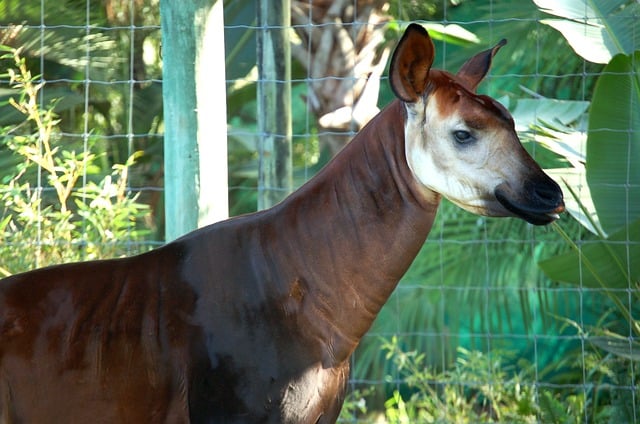
An okapi, also known as the forest giraffe, Congolese giraffe, zebra giraffe, is a herbivorous mammal, interestingly it is the only relative of the giraffe living today and it belongs to the family Giraffidae found in central Africa.
It has a long neck that can be used as a means of defense and a long tongue so long about 1.5 feet such that they can lick their own eyes and ears. Like other animals, It will rub its necks to the trees that lead to a brown exudate. Its long necks bring flexibility and can stretch towards the tree leaves, branches to feed on fruits, buds, leaves, twigs, and other vegetation.
Like its cousin brother Giraffe, Okapis also have long necks and mainly long dark-colored tongue to take away leaves from the branches.
Horse

The horse is a land mammal that belongs to the family Equidae found in all the places of the earth because of its domestication by humans.
They have long necks that are about one and a half the size of their head. A very long neck may interfere with balance leading to fatigue while they are running so it should be optimal in length and position.
An optimal length of the neck allows them to raise or lower their heads easily.
Komodo Dragon

A Komodo dragon, also known as the Komodo monitor, is a carnivorous and venomous lizard that is also the largest lizard that belongs to the family Varanidae and is found in the Indonesian islands.
These deadly lizards can grow up to 3 m and have a thick long neck that is stronger as it is adapted to pull the meat from their prey. Its neck along with tails balance each other and also their bodies while they are running and climbing.
Its long and powerful neck muscles support it to rip the flesh off the prey.
Zebra
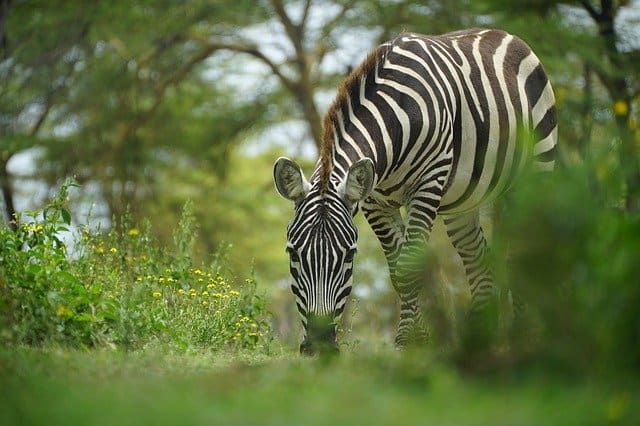
A Zebra is a herbivorous mammal with black-and-white striped coats that’s unique to each individual and it belongs to the family Equidae.
These striped animals have long necks that also have a black and white stripe on them. Its relatively long necks are optimal in length such that they can reach the grass on the ground and raise at or above their necks while standing, walking, and running.
Source:
https://www.wired.co.uk/article/why-do-giraffes-have-long-necks
https://www.livescience.com/27376-how-dinosaurs-grew-longest-necks.html

